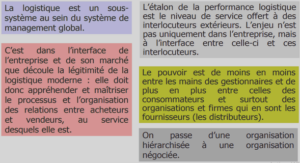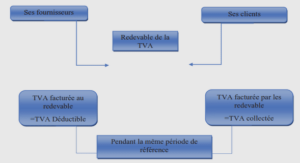Metal homeostasis in the juvenile cuttlefish Sepia officinalis
Experimental system and seawater quality follow-up
To allow individual follow-up, constant exposure, as well as long-term water quality (particularly considering nitrogen compounds), we set up experimental units presented in figure 4.1. In a 40-L tank (corresponding to one experimental unit), seawater mixing and oxygenation were provided by 2 water pumps (NJ400, Aquarium systems, France) and 2 air stones. A constant water renewal was provided in each experimental unit by peristaltic pump (521F/D2, Watson-Marlow Pumps Group, France), supplied with frequency converter and pumpheads (312X2, Watson-Marlow Pumps Group, France), at a rate of 30 mL min-1 from 60-L reservoirs. Seawater used during all experiments was decanted charcoal-filtered natural seawater to minimize particles and other dissolved metals attendance. Depending on renewal rate, reservoirs were refilled each day with seawater (either Zn-contaminated or control). In order to avoid animal interactions and to allow individual follow-up, a compartmentalized sieve was used. Each compartment had an area of 104 cm2 , which is enough space for juvenile development according to Forsythe et al. (1994). During all experiments, seawater parameter monitoring was checked daily. Global parameter variations for all experimental structures were : temperature = 17.5 ± 0.5◦C ; salinity = 32.5 ± 1 ; ammonia-, nitrite-, and nitratenitrogen < 0.5 mg L-1, < 0.5 mg L-1 and < 80 mg L-1 (according to Oestmann et al., 1997); pH = 8.0 ± 0.1 ; and dissolved oxygen > 9 mg L-1.
Experiments were realized under a natural photoperiod. To keep high water quality, feces were siphoned every 3 days, making sure not to disturb juveniles. 100 CHAPITRE 4. Figure 4.1 – Side view of the experimental system and top view of a compartimentalized sieve allowing individual follow-up of juvenile cuttlefish. Black arrows indicate the circulating direction of water renewal and grey arrow indicates water pump mixing direction inverted on the other side tank. 4.2.2.2 Zn-exposures and measurements During summer 2012, and according to previous studies on mortality induced by dissolved Zn on juvenile cuttlefish (unpublished data), juvenile cuttlefish were exposed to 50 and 200 µg L-1 (Z1 and Z2, respectively) Zn concentrations for 8- and 6-weeks, respectively, alongside a control. Both Zn concentrations were environmentally realistic, with Z2 corresponding to concentrations close to the previously determined 2-week LC50 value for juvenile cuttlefish (unpublished data).
The exposure media were spiked daily just after reservoir water renewal, using 20.84 g L-1 ZnCl2 (i.e. 10.0 g L-1 Zn) stock solution (ZnCl2 reagent grade, ≥ 98 %, Sigma-Aldrich, France), prepared in 0.22 µm-filtered artificial seawater (25.5 g NaCl, 6.4 g MgSO4, 5.2 g HEPES, 1.5 g CaCl2,2H2O, 0.75 g KCl in 1 liter Milli-Q water, pH 7.4). According to preliminary trials, each reservoir was spiked weekly with respective nominal concentrations plus 10 % in order to keep constant concentrations and compensate animal absorption and experimental unit adsorption. For all 3 batches (control and the 2 exposure conditions), 20 mL of seawater was sampled daily, immediately acidified with 1 % nitric acid (HNO3 69.5 %, Normapur grade), and stored at 4◦C until analyses.
Zn concentrations in the seawater were determined by air-acetylene flame atomic absorption spectrometry (F-AAS; AA240F – Varian) at a wavelength of 213.9 nm and with a slit of 1 nm. AAS is equipped with deuterium lamp (coded hollow-cathode lamp from Photron Lamps) to correct for nonspecific absorption. All calibration solutions were diluted from a stock standard (Zn calibration solution 1.000 ± 0.005 g L-1 Analytika Ltd.) in saline medium (30 g L-1 NaCl, Normapur, 99 %). Triplicate analyses were done on each sample and the mean values were used for evaluation. The limit of detection, defined as the background plus three times the standard deviation of the blank (3σ), for the determination of the Zn concentration in seawater was 6.2 µg L-1 .






